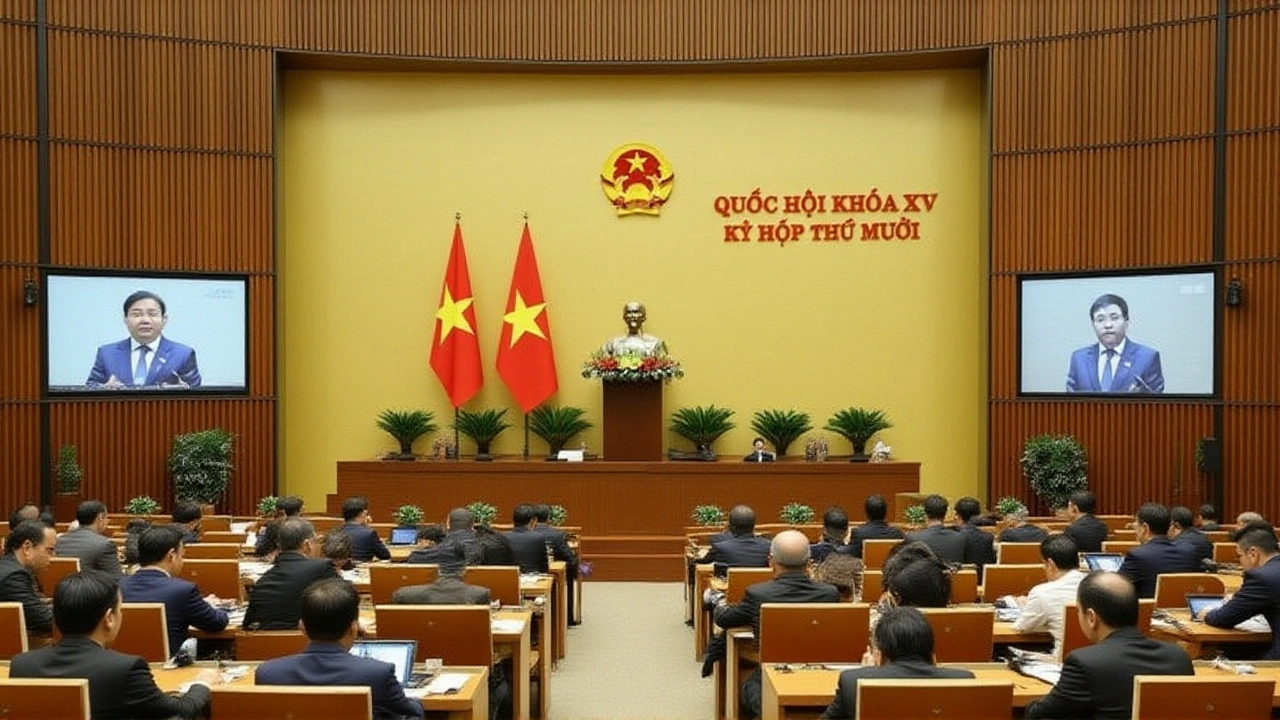Kenya’s 2025/26 national budget has handed the Ministry of Education a record Ksh 702.7 billion — nearly a third of the entire Ksh 4.29 trillion fiscal pie — making it the single largest recipient of public funds. The announcement, delivered by Treasury Cabinet Secretary John Mbadi on June 12, 2025, at Parliament Buildings in Nairobi, came with a stark warning: even as education spending hits its highest level ever, the government may no longer afford to keep it free.
Record Funding, Tough Trade-Offs
The Ksh 702.7 billion allocation marks a 12 percent year-on-year increase, dwarfing other critical sectors. National security got Ksh 464.9 billion. Infrastructure received just Ksh 217.3 billion for roads and Ksh 62.8 billion for energy. Health, despite its public visibility, was allocated Ksh 133.4 billion — less than one-fifth of education’s budget. Yet behind the headline number lies a story of strain, not celebration. The bulk — Ksh 387.2 billion — flows to the Teachers Service Commission (TSC). That includes Ksh 7.2 billion to hire intern teachers, Ksh 980 million to train educators on Competency Based Education (CBC), and Ksh 22 billion for livestreamed lessons across 8,000 secondary schools. But here’s the twist: while TSC’s budget grew, other programs were slashed. The Primary Education programme lost 17 percent of its funding. The Quality Assurance and Standards programme? Cut by 67 percent. That’s not just a line item change — it’s a gut punch to school inspections, curriculum oversight, and yes, the School Feeding Programme, which now gets only Ksh 3 billion, down from previous levels.Free Education Under Pressure
The government still touts free primary and secondary education as a pillar of its policy. Ksh 7 billion for free primary education. Ksh 51.9 billion for free day secondary education. Ksh 28.9 billion for junior secondary. But the reality on the ground tells a different story. The Ministry of Education disbursed Ksh 22 billion in capitation funds for Term 2 — a move that helped, but didn’t heal. Secondary schools got Ksh 11.6 billion. Primary and special needs institutions got the rest. And yet, schools are still waiting for payments. Parents are being asked to chip in. Teachers are going unpaid. Bills are piling up. CS Mbadi admitted as much to the National Assembly Committee of Education: “The government’s commitment to free public education may no longer be financially sustainable.” The fix? Incremental disbursements — 50 percent upfront, then 30 percent, then 20 percent — forcing schools to cover the gaps themselves. That’s not policy. That’s triage.
Higher Education and the Debt Trap
For university students, the Higher Education Loans Board (HELB) got Ksh 42.5 billion. Scholarships added another Ksh 16.9 billion. TVET students received Ksh 7.7 billion in capitation and scholarships. Total: Ksh 58.5 billion. Sounds generous? Until you consider that over 400,000 students still wait months — sometimes years — for HELB loans. And universities? They’re drowning. CS Mbadi proposed “radical austerity reforms”: staff layoffs, frozen hiring, and closure of satellite campuses. The message is clear: if you can’t manage your debt, you won’t get more money. Meanwhile, Technical and Vocational Education and Training (TVET) institutions are running on fumes. A recent audit revealed a Ksh 12.5 billion funding deficit. That’s not just about broken equipment or outdated labs. It’s about youth unemployment — Kenya’s most urgent crisis — and the very sector meant to solve it.Technology, Transparency, and Trust
The Ministry is also rolling out KEMIS, its new student data system, meant to replace the glitch-ridden NEMIS platform. Officials say it’ll fix “inefficiencies and data integrity issues.” But with capitation delays, unaccounted funds, and crumbling infrastructure, many educators are asking: why build a new dashboard when the foundation is crumbling? The Ministry claims it’s revising management systems. But without real accountability — without public audits, without whistleblower protections, without penalties for delayed payments — no software will fix what’s broken.
What’s Next?
The 2025/26 financial year begins July 1. Schools will open. Teachers will show up. Students will sit in overcrowded classrooms. And parents? They’ll keep paying what the government won’t. The Education Ministry’s budget may be the largest in Kenya’s history. But it’s also the most fragile. Without structural reform — without tackling corruption, inefficiency, and mismanagement — this record allocation could become a cautionary tale.What’s clear: education isn’t just about money. It’s about trust. And right now, that trust is running thin.
Frequently Asked Questions
How will the 67% cut to Quality Assurance affect school standards?
The 67% budget cut to the Quality Assurance and Standards programme means fewer inspections, reduced curriculum monitoring, and minimal support for schools implementing CBC. Without regular audits, substandard teaching practices and unqualified staff may go unchecked, especially in rural areas. This could lead to declining student performance and a loss of public confidence in the education system.
Why is the Teachers Service Commission getting so much funding?
The TSC receives Ksh 387.2 billion because it pays the salaries of over 700,000 public school teachers — the largest single payroll in Kenya. The increase includes funds for recruiting intern teachers and training on CBC. But critics argue that while salaries are covered, operational costs like textbooks, electricity, and repairs are ignored, leaving schools under-resourced despite teacher pay being prioritized.
What’s the impact of the Ksh 12.5 billion TVET funding gap?
The Ksh 12.5 billion shortfall in TVET funding means colleges can’t maintain workshops, hire skilled instructors, or update equipment for in-demand trades like welding, ICT, and agribusiness. With youth unemployment at 23%, this gap directly undermines Kenya’s goal of creating a skilled workforce. Many students are dropping out because their schools can’t deliver on promised training.
Will the new KEMIS system fix Kenya’s education data problems?
KEMIS aims to replace the outdated NEMIS platform, but its success depends on data accuracy and institutional buy-in. Past systems failed due to poor training, lack of internet access in rural schools, and political interference. Without a transparent rollout and independent oversight, KEMIS risks becoming another costly tool that collects data but doesn’t improve outcomes.
How are schools coping with delayed capitation funds?
Schools are using parent contributions, selling food, or borrowing from local lenders to cover basic costs. In some cases, teachers have gone months without allowances. The Ministry’s incremental disbursement model — 50-30-20 — forces schools to become mini-banks, diverting attention from teaching to fundraising. This undermines the very principle of free education.
What does ‘financially unsustainable’ mean for Kenya’s education future?
It means the government may soon stop fully funding free education, shifting costs to families through fees, levies, or mandatory donations. If current trends continue, the gap between policy and practice will widen, deepening inequality. Children in poor areas — already disadvantaged — could be left behind as wealthier families pay for what the state can no longer provide.